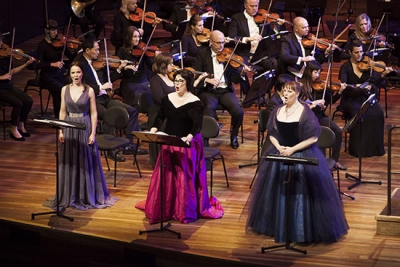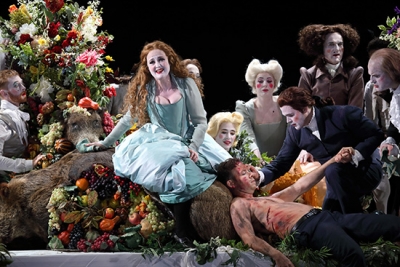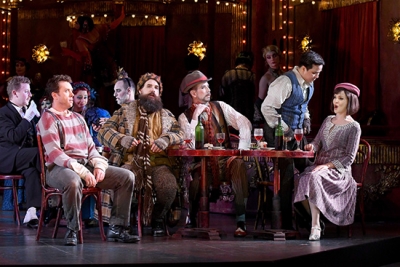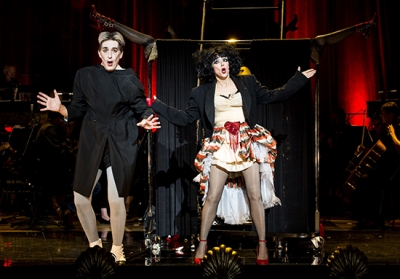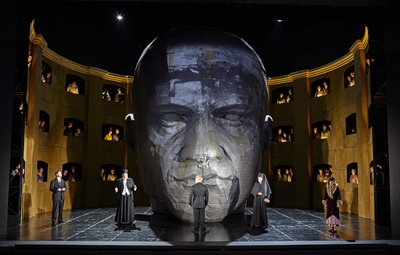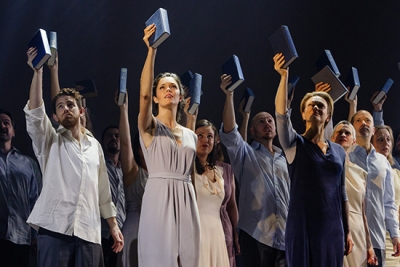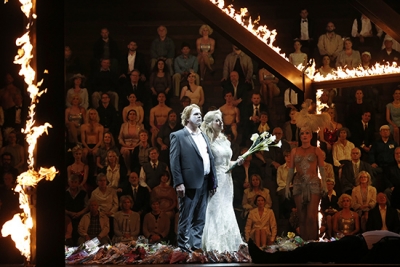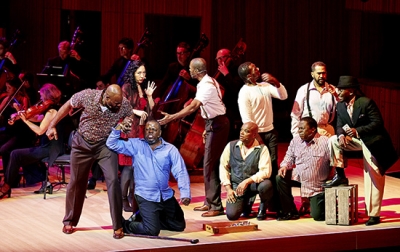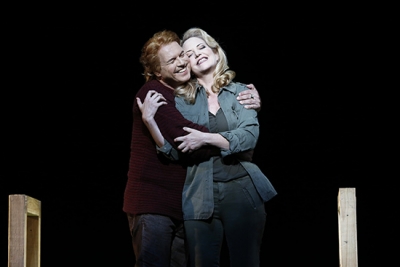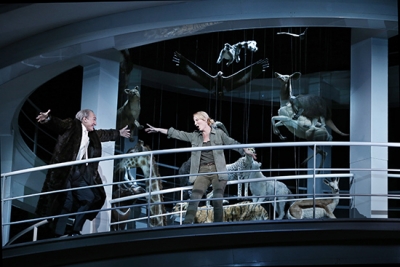Opera
Vincenzo Bellini – fresh from the success of I Capuleti e Montecchi in Venice – spent the July and August of 1830 on Lake Como biding his time. He was struck by the folk songs of the female workers at the textile mills as they made their way home. These idylls were to flavour his ...
... (read more)If one accepts the aptness of the old adage ‘one picture is worth a thousand words’, the range of pictorial delights offered by Barrie Kosky’s production of Handel’s oratorio Saul (1739) would test my editor’s word limit – generous though they always are ...
... (read more)The real test of an opera singer is how they sound in an opera theatre. The bane of ‘legitimate’ opera singers’ lives are singers on television talent shows, many of whom describe themselves as ‘opera singers’. They sing the occasional opera aria, frequently transposed into a more comfortable ...
... (read more)Contemporary opera doesn’t come much more innovative, vibrant or entertaining than Victorian Opera’s ‘Tis Pity: An operatic fantasia on selling the skin and the teeth, which played at the Melbourne Recital Centre from 4–8 February. Indefatigable VO Artistic Director Richard Mills has ...
... (read more)Within the Australian context, any allusion to King Roger would be taken by most to be an admiring soubriquet for the Swiss tennis maestro who, as it happens, won through to the quarter finals of the Australian Open while this review was being written. But while Melbourne is in thrall to the ...
... (read more)‘The Jews will not come to it because it is a Christian story and the ladies will not come because it is a virtuous one.’ George Frideric Handel’s much-quoted explanation for the lack of success of Theodora, his penultimate oratorio, may or may not be accurate, but there is no doubt about its ...
... (read more)After the exaltation of the closing duet in Siegfried (memorably sung by Stefan Vinke and Lise Lindstrom), we had to wait until the second part of the Prologue to Götterdämmerung before meeting the post-coital lovers. First we had the Norns (Tania Ferris, Jacqueline Dark, Anna-Louise Cole ...
... (read more)If any work can be dubbed as ‘The Great American Opera’, it is Gershwin’s genre-transgressing masterpiece, Porgy and Bess. It was based on white Southern writer DuBose Heyward’s novel Porgy (1925), as well as on his highly successful stage adaptation of the novel which had been a hit in ...
... (read more)We know that Siegfried – third opera in Der Ring des Nibelungen – had a curious gestation. Wagner put it aside after writing Act II, as if weary of Siegfried’s progress: this improbable hero’s search for love, fulfilment, individuation. For twelve years Wagner was diverted by love of a ...
... (read more)Die Walküre, for Arts Update, is the most successful work in Neil Armfield’s production of Der Ring des Nibelungen, now well underway at Arts Centre Melbourne. And this is fitting, Die Walküre being, for some us, the greatest of operas, with a first act of singular perfection, some of the ...
... (read more)
